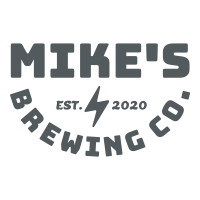Hops
|
Amount
|
Variety
|
Cost
|
Type
|
AA
|
Use
|
Time
|
IBU
|
Bill %
|
|
0.10 oz |
Summit0.1 oz Summit Hops |
|
Pellet |
18.5 |
First Wort
|
60 min |
6.81 |
1.1% |
|
0.40 oz |
Apollo0.4 oz Apollo Hops |
|
Pellet |
20 |
Boil
|
20 min |
16.22 |
4.3% |
|
0.30 oz |
Summit0.3 oz Summit Hops |
|
Pellet |
18.5 |
Boil
|
20 min |
11.25 |
3.2% |
|
0.20 oz |
Apollo0.2 oz Apollo Hops |
|
Pellet |
20 |
Boil
|
10 min |
4.86 |
2.1% |
|
0.40 oz |
Centennial0.4 oz Centennial Hops |
|
Pellet |
10 |
Boil
|
10 min |
4.86 |
4.3% |
|
0.20 oz |
Summit0.2 oz Summit Hops |
|
Pellet |
18.5 |
Boil
|
10 min |
4.49 |
2.1% |
|
0.30 oz |
Apollo0.3 oz Apollo Hops |
|
Pellet |
20 |
Whirlpool
|
20 min |
4.09 |
3.2% |
|
0.75 oz |
Centennial0.75 oz Centennial Hops |
|
Pellet |
10 |
Whirlpool
|
20 min |
5.11 |
8% |
|
0.75 oz |
Falconer's Flight0.75 oz Falconer's Flight Hops |
|
Pellet |
10 |
Whirlpool
|
20 min |
5.11 |
8% |
|
1.25 oz |
Apollo1.25 oz Apollo Hops |
|
Pellet |
20 |
Dry Hop
|
18 days |
|
13.3% |
|
1.25 oz |
Centennial1.25 oz Centennial Hops |
|
Pellet |
10 |
Dry Hop
|
18 days |
|
13.3% |
|
1.25 oz |
Chinook1.25 oz Chinook Hops |
|
Pellet |
13 |
Dry Hop
|
18 days |
|
13.3% |
|
1.75 oz |
Falconer's Flight1.75 oz Falconer's Flight Hops |
|
Pellet |
10 |
Dry Hop
|
18 days |
|
18.6% |
|
0.50 oz |
Summit0.5 oz Summit Hops |
|
Pellet |
18.5 |
Dry Hop
|
18 days |
|
5.3% |
|
9.40 oz
/ $ 0.00
|
Mash Guidelines
|
Amount
|
Description
|
Type
|
Start Temp
|
Target Temp
|
Time
|
|
4.31 gal |
|
Strike |
160 °F |
149 °F |
60 min |
|
3.97 gal |
|
Sparge |
168 °F |
168 °F |
15 min |
Starting Mash Thickness:
1.5 qt/lb
Starting Grain Temp:
65 °F |
Other Ingredients
|
Amount
|
Name
|
Cost
|
Type
|
Use
|
Time
|
|
1 each |
Whirlfloc Tablet
|
|
Fining |
Boil |
10 min. |
|
6 tsp |
Yeast Nutrient
|
|
Other |
Boil |
10 min. |
|
4 g |
Gypsum
|
|
Water Agt |
Mash |
1 hr. |
|
3.70 g |
Gypsum
|
|
Water Agt |
Sparge |
1 hr. |
|
5.43 ml |
Lactic acid
|
|
Water Agt |
Mash |
1 hr. |
Priming
|
Method: co2
CO2 Level: 2.25 Volumes |
Target Water Profile
Light colored and hoppy
Notes
What is First Wort Hopping?
First wort hopping (FWH) is when you add a large portion of the finishing hops to the boil kettle as the wort is transferred from the mash or lauter tun. As the boil kettle fills up, the hops steep in the wort and release those important oils and resins.
Normally, the aromatic oils are insoluble and evaporate during the boil. However, by letting the hops steep in the wort before the boil, the oils have more time to oxidize to more soluble compounds, which means there’s a greater chance those oils are kept in the beer during the boil and deliver additional hop complexity in the finished product.
Who Discovered First Wort Hopping?
It’s entirely possible FWH was discovered by accident. A brewer wanted to try something new and tossed hops into the kettle before the boil later realizing there was a flavor change in the finished beer. Even if this isn’t the case, isn’t it more interesting to believe in the myth?
First wort hopping was common practice around the turn of the 20th century to increase hop utilization. At some point in the mid-20th century, the practice was more or less discontinued. However, in 1995 Brauwelt magazine (Germany) reported on the “rediscovery of first wort hopping” research focusing on pilsner style beer and finding the process resulted in beers with finer hop aroma.
The report documented many German breweries that implemented FWH. In the past, brewers in England and Belgium also added hops before boiling. The research experiment was carried out in two German production lager breweries. Both breweries made two versions of Pilsner in very similar manners, including yeast pitching rates, brewing water, malt lots and using Type 45 pellets.
The Experiment
A portion of the late kettle hops (Tettnanger and Saaz) were added to first runnings in the kettle and were allowed to stay with the brew throughout the entire boil. The late hop/aroma addition was omitted.
At Brewery A, the first wort hopping addition of Tettnanger and Saaz hops amounted to 34% of the total hop weight. At Brewery B, which used only Tettnanger, it was 53% of the total hop weight. In both resulting beers the first wort hopped beer had more IBUs than the non-first wort hopped beer, 39.6 to 37.9 at Brewery A and 32.8 to 27.2 at Brewery B.
Lager Brewery IBU of FWH Beer IBU of Non-FWH Beer
Brewery A 39.6 IBUs 37.9 IBUs
Brewery B 32.8 IBUs 27.2 IBUs
Despite increased bitterness, the panelists described the first wort hopped beers as more pleasant tasting and overwhelmingly preferred them, creating a more harmonic beer and uniform bitterness when compared to the conventionally hopped beer. Further analysis indicated the conventionally hopped beers contained a higher level of hop aroma substances, but panelists nonetheless described the FWH beers as having a very fine and rounded hop aroma and rounded hop flavor.
The authors of the study recommended that first wort hopping contain at least 30% of the total hop addition, preferably using the later aroma additions. The overall alpha acid quantity shouldn’t be reduced because the results of the tasting showed that the bitterness of the first wort hopped beers is regarded as very good and very mild. A reduction of the hop quantity could result in weakened bitterness, too.
How To Do First Wort Hopping
First wort hopping is practiced by a number of craft brewers and homebrewers and is applied to a full range of styles both ales and lagers. It’s best suited for beers that call for noble hops and isn’t suited for beers that want volatile hop oil presence or fruity hop aroma; in fact, first wort hopping actually works against developing those hop characteristics.
Mash Hopping
Many people confuse ‘First Wort Hopping’ and ‘Mash Hopping’ as one in the same. Mash hopping is actually the process of adding hops to your mash tun during the mash rest.
Unlike FWH, hops added to the mash undergo little to no hop isomerization in the tun.
To do first wort hopping, add a substantial portion of the hop bill (30-50%) to the kettle as you transfer wort from the lauter tun. The hops steep in the wort for the entire runoff and remain in the wort for the duration of the boil.
Make sure to use low alpha acid hops that are normally scheduled as the final aroma/flavor additions because isomerization begins at temperatures below boiling; more hops in the wort longer during the boil causes the total bitterness of the beer to increase, although the amount is subtle because the hops are low in alpha acid. First wort hopping takes advantage of higher pre-boiled wort pH levels, which allows for higher isomerization.
The reason craft brewers and homebrewers use first wort hopping is because it can change your beer’s hop profile, which is more easily noticed in moderately hopped beers. However, many brewers will tell you those pre-boil additions result in subtle notes that will be noticed in even hop-intense beers. The new hop flavors aren’t easily defined, and the chemistry behind first wort hopping isn’t fully understood, but normally an adjustment of 10% is added to the calculated bitterness in IBUs.

Last Updated and Sharing

- Public: Yup, Shared
- Last Updated: 2020-01-28 13:37 UTC
For quick copying and pasting to a text based forum or email.
Click the Download as HTML file button below.
Recipe costs can be adjusted by changing the batch size. They won't be saved but will give you an idea of costs if your final yield was different.
|
Cost $ |
Cost % |
| Fermentables |
$ |
|
Steeping Grains
(Extract Only) |
$ |
|
| Hops |
$ |
|
| Yeast |
$ |
|
| Other |
$ |
|
| Cost Per Barrel |
$ 0.00 |
|
| Cost Per Pint |
$ 0.00 |
|
| Total Cost |
$ 0.00 |
|
Discussion about this recipe:
